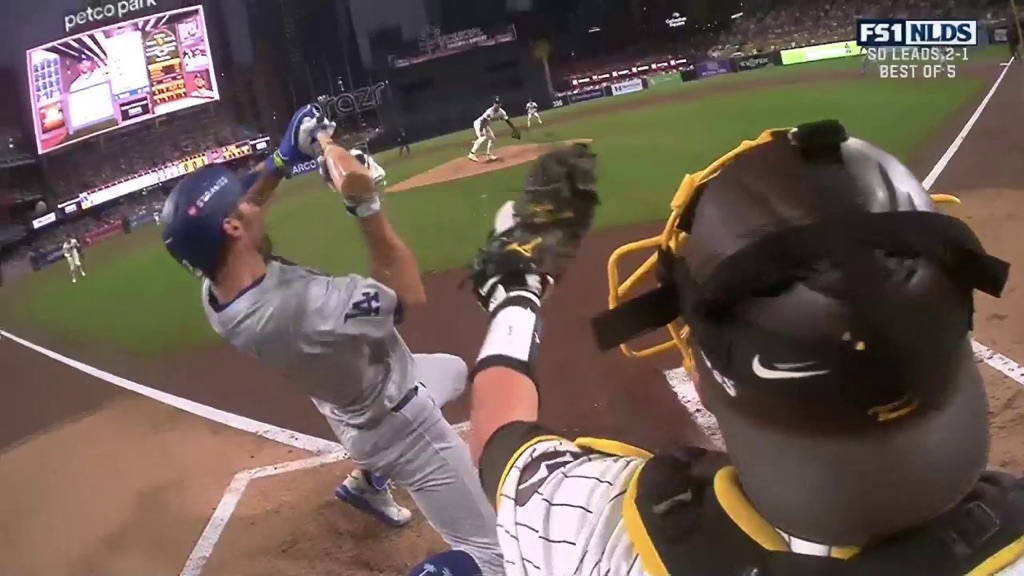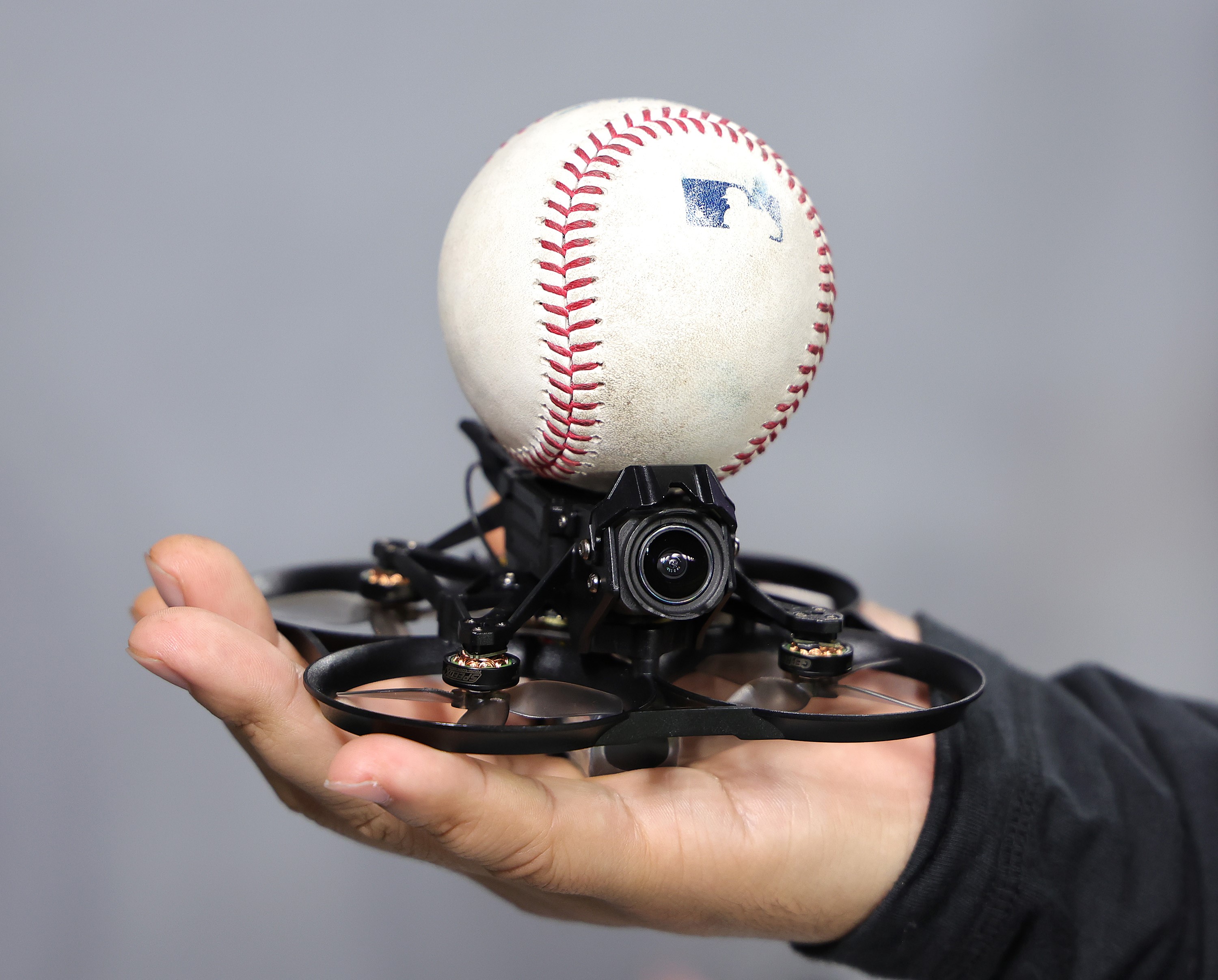
LOS ANGELES—Major League Baseball rules like the 18-second pitch clock aren’t the only thing that’s changed about the national pastime.
How games are produced for television is undergoing a series of incremental changes that, when taken together, will bring a fresh point of view to those watching the action. That will be especially true during the Fox Sports production of this year’s World Series between the New York Yankees and Los Angeles Dodgers.
[Game 1 of the 2024 World Series is Friday, Oct. 25, starting at 8:08 p.m. (ET). The series will air exclusively on the Fox broadcast network and Fox Deportes. Streaming coverage will be available on the Fox Sports App and FoxSports.com.]
“There are some years that are revolutionary, and some years that are evolutionary,” said Michael Davies, senior vice president of technical and field operations at Fox Sports, referring to at least a half-dozen production and technology enhancements added over the years.
“You put all of these changes together, and you’re starting to say, ‘My God, there's been a ton of evolution in baseball [coverage],’ ” he said. “Year-on-year, we’ve gone from covering the game from the outside in to looking for ways to cover it from the inside out.” Much of the credit for this evolution goes to Fox Sports producer Pete Macheska, director Matt Gangl and Brad Cheney, vice president of field operations and engineering, Davies said.
Inside-Out
Fox Sports is augmenting familiar production staples like Dirt Cams, on-field mics and in-game player interviews, which have helped to bring an “inside-out” perspective to viewers, with enhanced versions of other production technology.
Perhaps the most notable enhancement will be a new Ump View camera that brings a far clearer point of view from behind the plate to the production.
The professional video industry's #1 source for news, trends and product and tech information. Sign up below.
“Ump View is a fantastic camera,” Davies said. [Production coordinator] Rob Bunn and the RF Wireless guys have done a phenomenal job improving that camera. We’re using their very new camera now, and that actually makes a big difference in terms of clarity, eliminating motion blur. And the battery life is insane.”
Davies credited MLB for its willingness to work with RF Wireless to perfect an RF camera mounted at the top of the plate umpire’s mask that can be shaded to match other game cameras and support its use during games. Fox Sports, which debuted its use of the camera during the 2022 MLB All-Star Game, is looking forward to seeing its clearer shots integrated into World Series coverage, he says.
“You know, baseball, being good partners, allows us to do these things,” he said. “Their evangelism of the umpire camera was the reason that now it’s becoming an indispensable type of camera, and you know, we’re really looking forward to seeing what the next umpire cam can do.”
Cameras
• 20 operated cameras
• 10 of those as high-speed cameras
• 1 RF camera
• 2 RF Movi
• 6 Robo
• 3 POV, including Flycam
• 2 Phantom
• 3 Dirt Cams
• 1 Ump Cam
• 1 Drone
Audio
• 52 MLB Effect Mics
• 3 Parabolic Mics
Replay
• 142 channels of record
• 32 channels of playout
Graphics
• 2 Vizrt
• 1 FoxBox
How drones are used also contributes to the inside-out perspective the broadcaster is seeking. Between innings, Hummingbird drones add a first-person perspective, Davies said.
“We started several years ago using drones,” he said. “Using them in the game is table stakes—not only for beauty shots but to capture a unique perspective during some interesting between-inning flights.”
Evolution To Revolution
As with its other MLB postseason coverage, Fox Sports will shoot the World Series in 1080p HDR, which Davies considers to be “table stakes” for an industry continuing to evolve from 720p and 1080i HD and standard dynamic range.
The broadcaster also will incorporate its “iterative home-run tracker” to represent home runs graphically and “make the look and sound more exciting,” as well as a new treatment for behind-the-plate ad signage that doesn’t require a green board, he said.
“We use a method to place the ads between the players and the wall,” Davies said. “It’s not revolutionary, but if you don’t think about the ads and you don't see a green board, that's a good thing.”

Fox Sports will continue to use its strike-zone treatment—a far subtler approach than others, says Davies.
“That’s something that’s uniquely Fox,” he said. “Everybody does the strike zone. We do a very subtle strike zone that you can kind of see if you’re looking for it, and you kind of miss if you’re not, which is exactly what we are trying to achieve.”
If all of these advancements are steps up the evolutionary ladder, what will characterize the next revolution in remote production? While Davies didn’t specifically identify what might be the next big thing, he did point to artificial intelligence as a potential catalyst certain to play a bigger role in the future.
“If you squint, you’ll see AI everywhere,” he said. “AI is all around us, and we’re just beginning to understand how to use it.”
Early use cases have involved video interpolation—mathematically creating new video frames squeezed between real frames, like lunch meat between two slices of bread—that have powered production tech like XtraMotion synthetic slow motion, he said.
AI algorithms also create rich metadata that makes it easier to find desired shots on the Fox Sports media asset-management system and can cut the time needed to create highlight reels and find specific shots for replays.
“What we’re looking at in the future for AI is tracking, having tracking inform different high-resolution cameras,” he said.
Even generative artificial intelligence (Gen AI) will play a role in the future, but not one that threatens the jobs of those who produce the games, Davies said.
“Everybody wants to talk about Gen AI. It's funny that there just aren’t too many hard-and-fast use cases,” Davies said. “I keep hearing the same things over and over again. Like we can do real-time translation. We can do real-time descriptive audio. But in terms of the machines coming for our jobs, we're not quite seeing that yet.”
Phil Kurz is a contributing editor to TV Tech. He has written about TV and video technology for more than 30 years and served as editor of three leading industry magazines. He earned a Bachelor of Journalism and a Master’s Degree in Journalism from the University of Missouri-Columbia School of Journalism.

